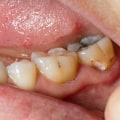Have you recently been diagnosed with severe tooth decay? If so, you may be wondering what your best course of action is. Root canals for severe tooth decay can be a great option for restoring your oral health, but it's important to understand what the process involves and what you can expect. Root canals are a common procedure, but one that can still be intimidating. This article will provide you with the information you need to know about root canals for severe tooth decay, including what the process entails, how much it costs, and what to expect during and after the procedure. Root canals are a common type of dental treatment used to treat severe tooth decay. When decay reaches a certain level, it can cause extensive damage to the tooth and the surrounding tissue.
A root canal procedure is performed to remove the damaged areas of the tooth and restore it back to its healthy state. To understand root canals for severe tooth decay, it is important to first understand the causes and symptoms of this condition, how it is diagnosed, and the treatment options available.
What is a root canal?
A root canal is a procedure used to remove infected or damaged pulp from inside the tooth. During a root canal, the dentist will use special instruments to clean out the affected area and then fill it with an inert material to prevent further damage. This procedure is done under local anesthesia and usually takes one or two visits to complete.What causes severe tooth decay?
Severe tooth decay can be caused by a number of factors, including poor oral hygiene habits, inadequate brushing and flossing, and consuming sugary drinks and foods.It can also be caused by certain medications or medical conditions that reduce saliva production, which can lead to dry mouth.
What are the symptoms of severe tooth decay?
Symptoms of severe tooth decay may include pain when chewing, sensitivity to hot and cold temperatures, bad breath, and a visible hole in the affected tooth. If left untreated, the decay can spread to other teeth or even into the jawbone.How is severe tooth decay diagnosed?
Severe tooth decay is usually diagnosed by a dentist through a physical examination. The dentist may use X-rays or other imaging tests to get a better look at the affected tooth. They may also take a dental history to determine if any underlying medical conditions or medications are contributing to the decay.What are the treatment options for severe tooth decay?
The treatment for severe tooth decay depends on the extent of the damage and how far it has progressed.In some cases, fillings may be used to repair smaller cavities. However, if the damage is more extensive, a root canal may be needed. During a root canal, the infected or damaged pulp is removed and replaced with an inert material.What preventive measures should be taken to avoid severe tooth decay? The best way to prevent severe tooth decay is to practice good oral hygiene habits such as brushing twice daily with fluoride toothpaste and flossing regularly. It is also important to limit your consumption of sugary drinks and foods, as well as visit your dentist regularly for checkups and cleanings.
Preventive Measures
Preventive measures are an important part of keeping your teeth healthy and avoiding the need for a root canal.Brushing and flossing regularly can help remove plaque and bacteria from your teeth and gums, preventing decay. Avoiding sugary drinks and foods can also help reduce the risk of decay. Visiting your dentist regularly is also important for keeping a close eye on any potential problems with your teeth and gums. Your dentist may be able to spot early signs of decay and treat it before it becomes severe enough to require a root canal.
Root Canal Procedure
Root Canal ProcedureA root canal procedure is used to treat severe tooth decay, which can occur when cavities are left untreated.The procedure involves removing the infected and decayed tissue from the inside of the tooth, then cleaning and sealing it. This helps protect the tooth from further damage and infection. The procedure is usually done by a dentist or endodontist, and can take up to two hours. During the procedure, the affected area is numbed with a local anesthetic. The dentist will then drill into the tooth to access the infected pulp, which is removed using special instruments.
After this, the tooth is cleaned and sealed with a filling material. This helps to protect the tooth from further damage and infection. Once the procedure is complete, the patient may experience some sensitivity or discomfort for a few days. Potential risks associated with a root canal procedure include infection, nerve damage, and other complications such as bleeding or swelling. It is important to follow the dentist’s instructions after the procedure to help prevent these risks.
Additionally, regular dental check-ups are important for detecting any issues early on. In conclusion, root canals for severe tooth decay can help to save a damaged tooth and prevent further damage. It is important to understand the causes and symptoms of this condition, as well as how it is diagnosed and treated. Taking preventive measures such as brushing and flossing regularly, avoiding sugary drinks, and visiting the dentist regularly can help to reduce the risk of developing severe tooth decay. Root canal procedures are a safe and effective way to restore a severely decayed tooth, while preventative measures like regular dental visits, brushing, and flossing can help to reduce the risk of developing severe decay in the first place.






